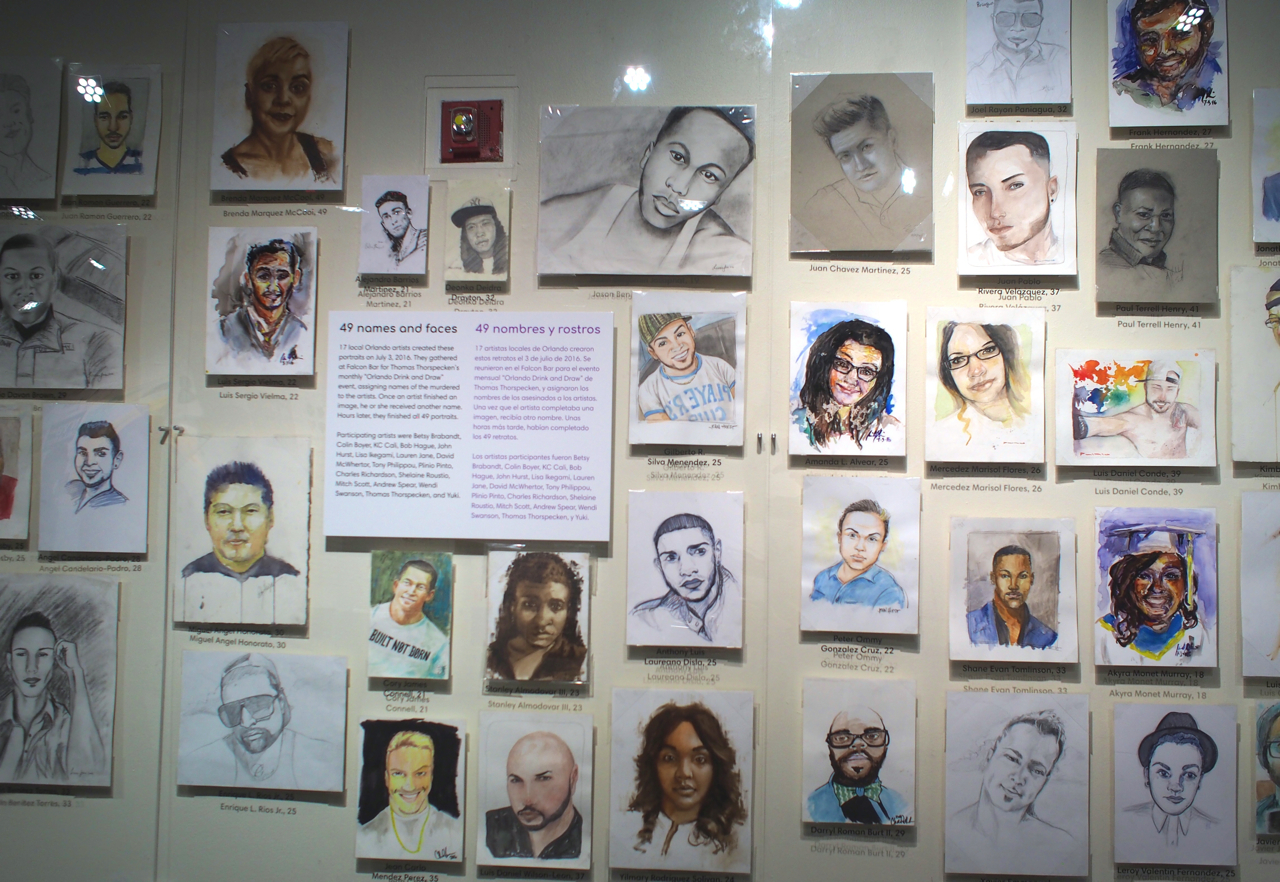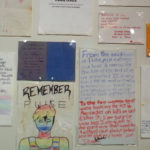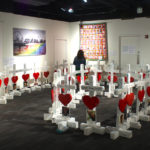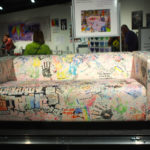
There are boxes atop tissues on every display case at the Pulse One Orlando Exhibit that opened Monday at the Orange County Regional History Center, and they are being used.
From now through Saturday the center is displaying 200-300 items that were offered in the past year at various make-shift shrines throughout Orlando, items curated to express the community’s sorrow over the 49 people murdered, but also the love, creativity and faith that people left behind in the open, the rain and the heat, from personal notes to a love seat, from rosaries to the 49 memorial crosses carved and donated by an Indiana artist.
 These are among the more than 5,000 items that Orlando, Orange County and the history center have gathered – and are still gathering – and cleaning, restoring, and archiving to preserve forever the material expressions of a city trying so hard to draw love an unity from tragedy and mourning. Eventually a permanent display will be developed, in part from input from the families of the 49 murdered on June 12, 2016, at Orlando’s popular gay nightclub Pulse, on Latino night.
These are among the more than 5,000 items that Orlando, Orange County and the history center have gathered – and are still gathering – and cleaning, restoring, and archiving to preserve forever the material expressions of a city trying so hard to draw love an unity from tragedy and mourning. Eventually a permanent display will be developed, in part from input from the families of the 49 murdered on June 12, 2016, at Orlando’s popular gay nightclub Pulse, on Latino night.
Curators set out for this exhibit, to mark the one-year anniversary, to offer “a little taste of this, a little taste of that,” from among the mementoes, but through that clear patterns began to emerge, including a lot of art, and a lot of faith-based items, said History Center Executive Director Michael Perkins.
 “The collection in toto is very heavy with art. We realized after a while that, while 9/11 is more for first responders, firefighters, with the badges and helmets and things like that, this collection is filled with art, of the folks we lost, and given the fact that Orlando is a pretty artistic community,” Perkins said.
“The collection in toto is very heavy with art. We realized after a while that, while 9/11 is more for first responders, firefighters, with the badges and helmets and things like that, this collection is filled with art, of the folks we lost, and given the fact that Orlando is a pretty artistic community,” Perkins said.
Like much of what is being observed in Orlando Monday, Perkins said he hoped people get a sense of the community’s, and the nation’s and world’s responses of love and support.
“We think that’s what the collection shows the story of,” Perkins said.
 That message shows up in numerous items, along with drawings and paintings of each of the 49 victims. There is a couch placed at the Dr. Phillips Center for the Performing Arts by Ikea, which was then signed with messages by thousands of people. There are signed flags left by visitors from other states and countries. There are displays dedicated to the police, deputy sheriffs, firefighters, paramedics, doctors and nurses who performed to the apex of their calls of duty.
That message shows up in numerous items, along with drawings and paintings of each of the 49 victims. There is a couch placed at the Dr. Phillips Center for the Performing Arts by Ikea, which was then signed with messages by thousands of people. There are signed flags left by visitors from other states and countries. There are displays dedicated to the police, deputy sheriffs, firefighters, paramedics, doctors and nurses who performed to the apex of their calls of duty.
Perkins said he was most affected by the the items, particularly personal notes, left by children.
“Those have a particular meaning to me, to just get a sense of how a child could possibly process something that is just unimaginable. They’re very simple messages from, ‘I hope you’re happy in heaven,’ to ‘I hope you all feel better soon.’ Just simple, innocent messages just written on a little piece of paper, of which we found so many,” Perkins said.
Many of the items also are on display over the internet, along with images of hundreds of other items, at the One Orlando Collection Digital Gallery.



